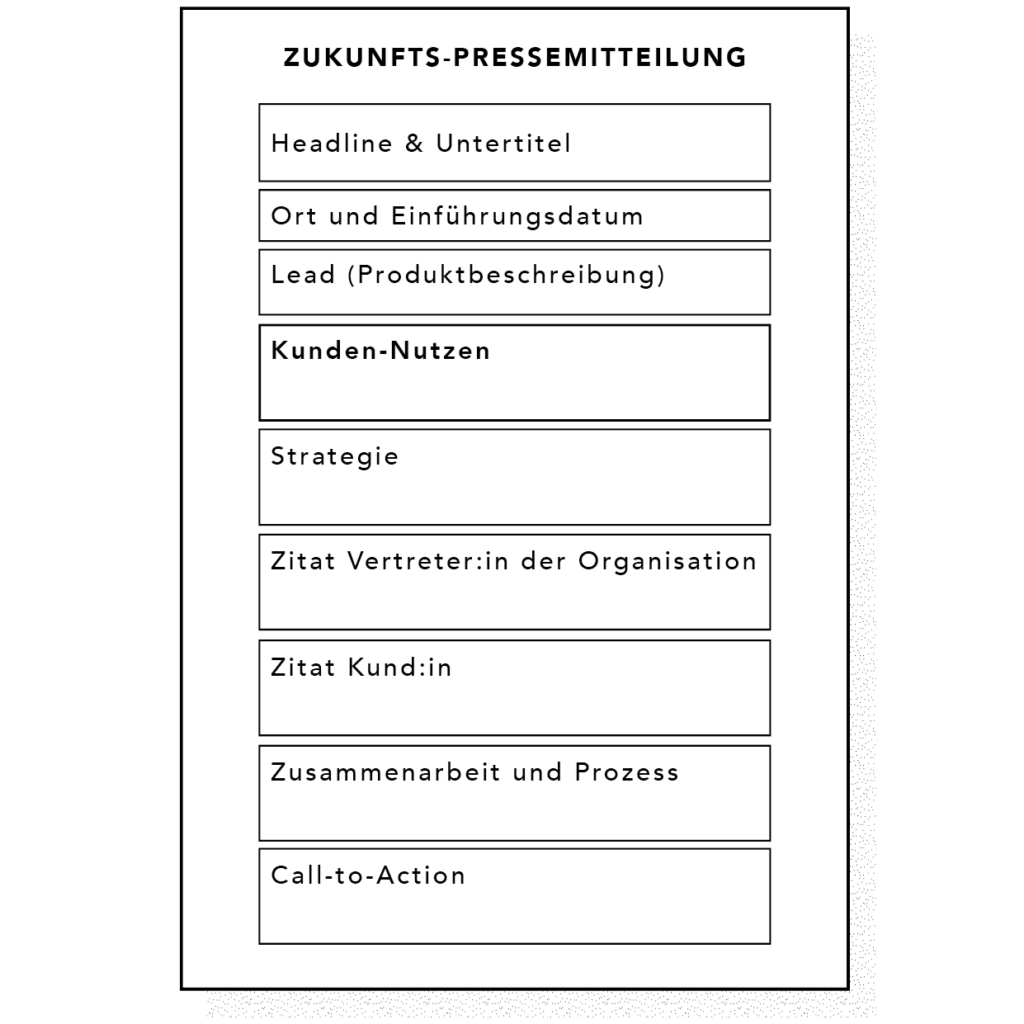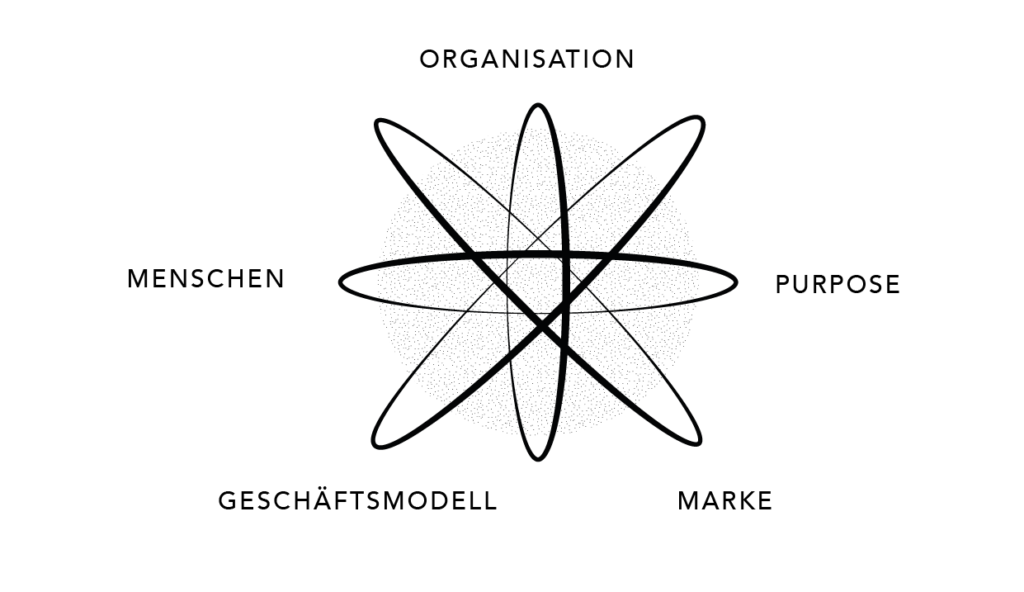For what?
Even in the early days of Amazon, CEO Jeff Bezos demanded that his
teams to create a "Future Press Release" long before the launch of a new product or innovation. This is a technique that will help you and your team to create groundbreaking innovations and take decisive steps forward in a cultural transformation.
The future press release method is used to describe a new product or innovation in the style of a story. The method is backward-looking, i.e. the idea is developed based on imaginary benefits for customers. The press release is as simple as possible in its description, concentrates on the most important features and creates understanding and agreement on the central goals.
Writing proposals in full narratives leads to better ideas, more clarity about the ideas and better communication about the ideas.
Example
When John Rossman, author of the book "Think like Amazon" (2019), joined the company as an executive in March 2002, the first thing he had to do was write a press release for Amazon Marketplace, a business that now accounts for more than half of all units sold on Amazon. Rossman wrote his press release six months before the launch of the new business. The document was not intended for the public. It was written to motivate, engage and empower his internal team.
We also use this technique ourselves as part of our consulting practice when we create new offers, such as a coaching product recently. Following a joint brainstorming session, we distribute the roles in the team to create the press release. This gives creativity a container - the clear and simple structure requires discipline and consistency in implementation.
What matters
The Future Press Release follows four rules:
Rule 1
The press release is written from the perspective of a point in time.
The press release is written when the goal has already been reached and success has already been achieved. Press releases at market launch are good, but it is better to write after the market launch when customer feedback is already available.
Rule 2
Start with the customer. Use the press release to explain why the innovation or your product is important to customers (and other key stakeholders if applicable). How has the customer experience improved? Why is your innovation important to customers? What do customers like about this new service?
Then discuss further reasons why the innovation was important and what your customers' intentions were.
Rule 3
Set a bold and clear goal. Articulate measurable results that you have achieved, including financial, operational and market share results.
Rule 4
Outline the principles that have led to success. This is the
most difficult and important aspect of the future press release. Identify the hurdles you overcame, the important decisions and the design principles that led to success. Discuss the issues that had to be addressed to achieve success. Getting these kinds of tricky issues on the table early helps everyone understand the true nature of the change needed. How do you actually overcome these challenges? You'll find out later.
Step by step
Step 1: Get together as a team and appoint a moderator and a timekeeper for the session. Start the timer (60 minutes).
Step 2: View the template for the press release and assign the roles of who will design and write which part of the press release.
Step 3: Copy the questions into a shared document and take 15 minutes to create a first draft of the press release (working individually in roles).
Step 4: Go through the draft together point by point and agree on adjustments (20 minutes).
Step 5: Take 15 minutes to improve the design (working individually in roles).
Step 6: Final 5 minutes: Read out the result and celebrate the success. Agree on the next steps.
Template for the structure of the press release
- Headline: Name of the product or innovation. What should the product be called? What should it do?
- Subtitle: Who is the target group for the product and what is the goal or core benefit?
- Location, launch date: What date in the future have you chosen to achieve the goal?
- Lead: Describe the product in layman's terms. Assume that readers will only take note of this paragraph in case of doubt. Focus on the goal and purpose of the product or innovation.
- Customer benefit: This is a core component of the press release. What problem does the product solve for the target group? How does the product make the customer more successful? This is not about a list of product features, but about descriptions of effects.
- Strategy: How does the product or innovation help our own business? How does it support the purpose of the organization?
- Quote from a representative of the organization: Why did the organization introduce the product or support the innovation? The quote should come from a person who was involved in the project.
- Customer quote: Make it clear what type of customer you are dealing with. What role does the product or innovation play in the customer's life? What has improved? Emphasize the personal benefit!
- Collaboration: How did the team work together to achieve the goal? What hurdles did the team overcome to make the product successful?
- Call-to-action: Now that all the essential elements of your work are described, tell the reader what you expect them to do next, for example: "Download the file now!"
Framework
Duration: approx. 1 hour (please work with timeboxing)
Format: virtual (e.g. working together on a text document)
during a video conference) or in person at the whiteboard
Participants: small team of 4 - 5 members
You can find more information on this and other tools for overcoming business challenges with communicative means in the book






